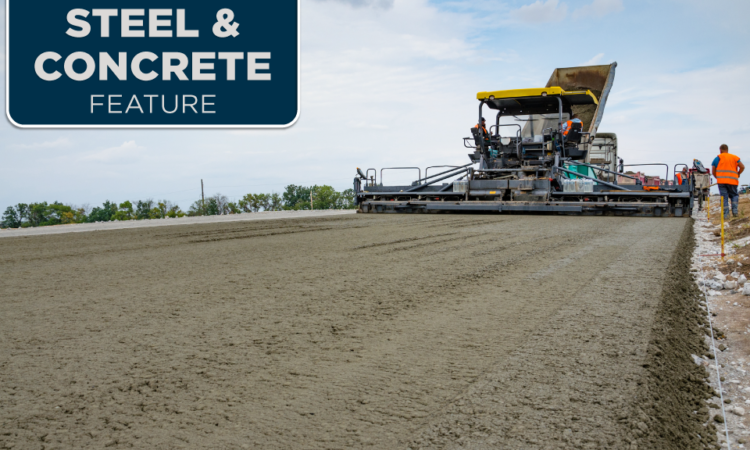The Manitoba government announced recently it will restore part of Provincial Trunk Highway (PTH) 75, a four-lane divided road that runs between Winnipeg and the US border.
The stretch of Highway 75 that is being upgraded lies between the southern Manitoba towns of Morris and Ste. Agathe.
Transportation and Infrastructure Minister Doyle Piwniuk said in an announcement, “The upgrades will improve the efficiency of Canada’s international and inter-provincial trade flows and make travel on PTH 75 safer for everyone.”
Work will include 27.7 kilometres of surface reconstruction, as well as shoulder, drainage and intersection improvements.
The restoration of the highway will be made with concrete pavement, a more durable and efficient material than the asphalt that was used the last time the highway was rebuilt more than 30 years ago.
The project will reuse the existing pavement structure as a base for the new pavement. The new concrete pavement will use both limestone cement and fly ash to reduce the carbon footprint and improve pavement performance.
The pavement will also use corrosion-resistant steel to extend the lifespan of the new highway.
Concrete construction means there no weight restrictions on the highway, which will be built to the same standards as US Interstate 29, which connects with Highway 75 at the North Dakota border.
Vipin Sharma, manager, pavement engineering in the Vancouver office of Tetra Tech Canada Inc., says concrete is less commonly used than asphalt as a paving material in most of western Canada.
“It is more expensive than asphalt to install, but it is more durable and has a longer surface life of 40-50 years,” said Sharma. “Concrete is also more resistant to the freeze-thaw cycle in the early spring and late fall and to frost heave.”
The border crossing handles the greatest trade throughput by value west of Windsor-Detroit, approximately $20 billion in two-way trade per year.
Most Canadian products shipped on Highway 75 are either manufactured goods made in Winnipeg or agricultural products from rural Manitoba.
Highway 75 is located in the low-lying Red River valley and runs parallel to the river from the US border to Winnipeg.
The highway is flooded regularly in the spring, and all that water has contributed to the overall decline of the surface over the years.
Despite ongoing maintenance, the pavement on that stretch of highway has deteriorated to the point where full reconstruction is required, the minister says.
The work will be tendered as two separate projects:
- Concrete reconstruction of the southbound lanes of PTH 75 from PTH 23 to PR 205; and
- Concrete reconstruction of the southbound lanes of PTH 75 from PR 205 to PR 305.
The Province plans to advertise tenders for the two projects in the spring of 2023. Both projects are expected to be completed by the fall of 2023.
The news of Highway 75’s imminent upgrade was received enthusiastically by Manitoba’s road builders and truckers.
“The Highway 75 upgrade is important news for our industry,” said Chris Lorenc, president of Manitoba Heavy Construction Association. “It shows the government’s commitment to investing in the province’s road and highway infrastructure. Fifty-four percent of Manitoba’s gross domestic product comes from trade, and most of the traffic related to trade is carried on roads like Highway 75 and the Trans-Canada Highway.”
With between $22 billion and $24 billion of trade moving north-south along Highway 75, Lorenc says the highway upgrade will generate a significant return on investment for the province and the country.
“Our view is that the number one responsibility for each level of government is to grow the economy,” he said.
Aaron Dolyniuk, executive director of the Manitoba Trucking Association (MTA), says the road work will improve safety for everyone traveling on Highway 75.
“It will reduce wear and tear on equipment, making for a safer and more efficient trip for our industry’s professional drivers,” said Dolyniuk.
The MTA “has long sounded the bell” on the need for increased infrastructure investment and maintenance in Manitoba, he says.
“Concerns surrounding Highway 75, including the state of the highway and the impact of flooding detours on industry and the consumer, are issues we have often raised,” said Dolyniuk.
Manitoba has already spent more than $70 million on surface rehabilitation, reconstruction and grade improvements on Highway 75 since 2020, with more than $60 million in upgrades planned over the next three years.
Upcoming surface improvement projects in the 2022 Multi-Year Highways Investment Strategy include work on the southbound lanes of Highway 75 at various locations between Provincial Road 305, near St. Agathe, and the US border.


